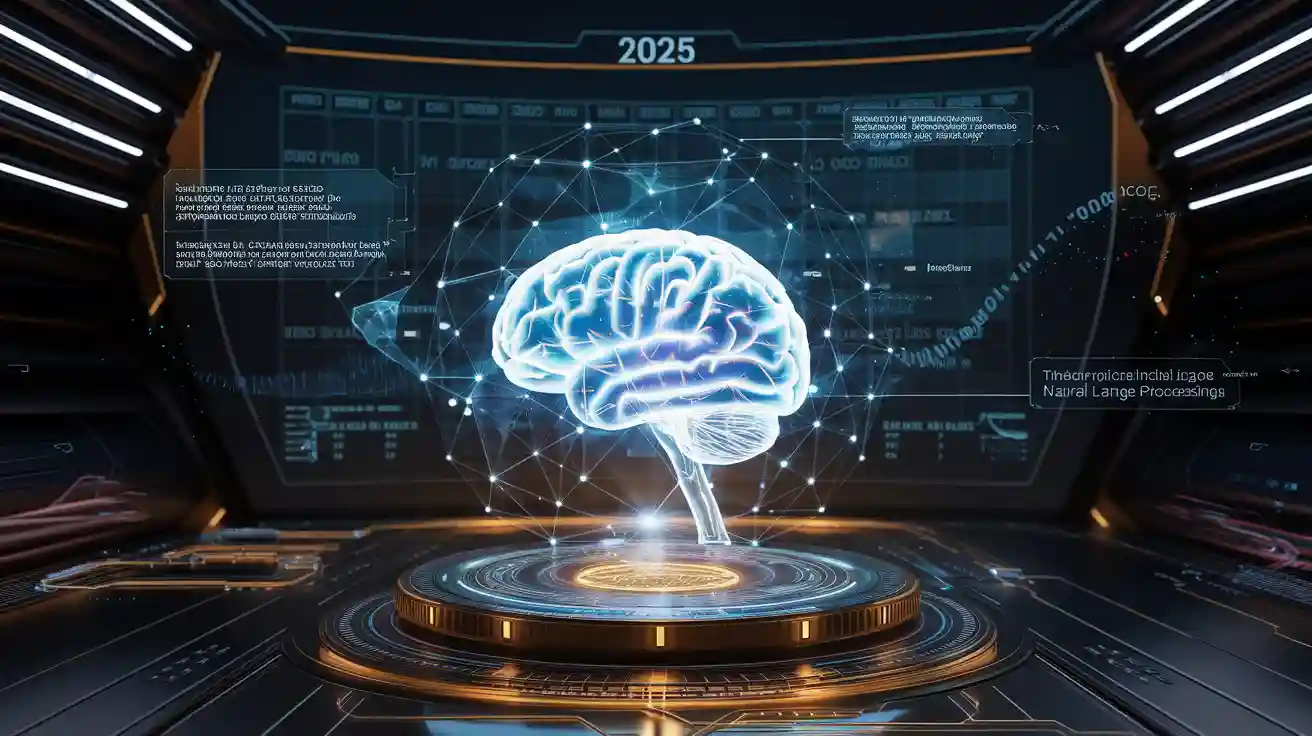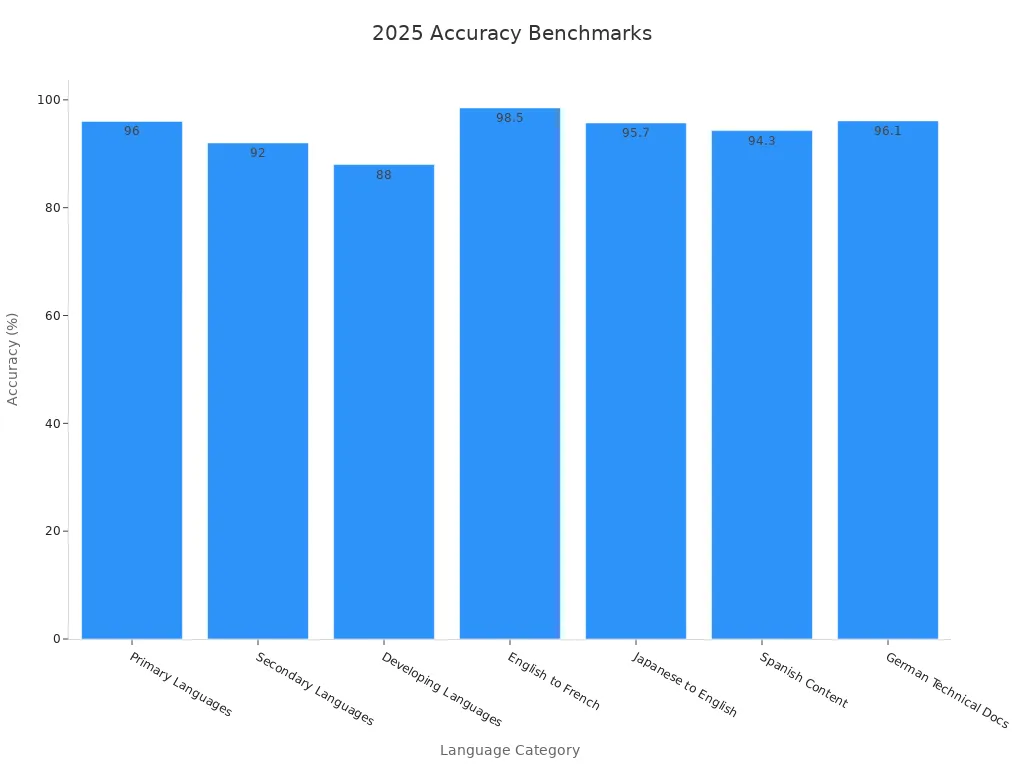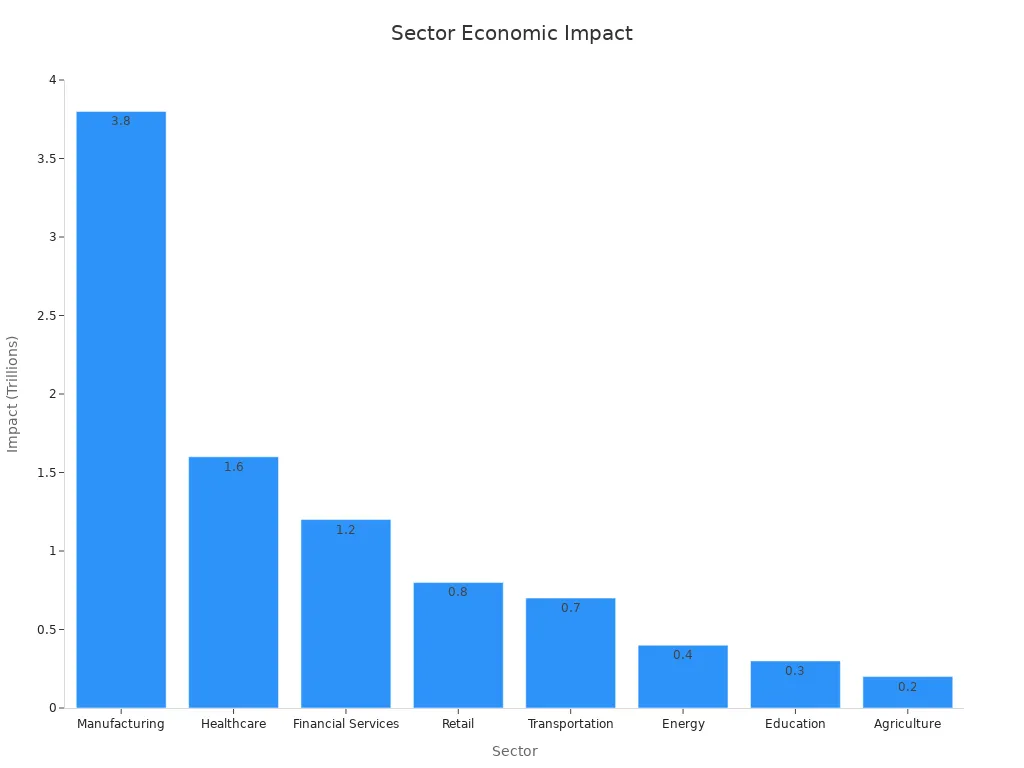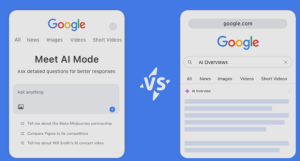
Natural language processing (NLP) is set to redefine how you interact with technology by 2025. As AI and machine learning evolve, NLP will become more adept at understanding and generating human-like communication. The global NLP market, projected to grow at an astounding CAGR of 40.4% between 2023 and 2030, highlights its increasing importance. By 2029, this market could surpass $161.81 billion, underscoring its pivotal role in addressing global communication challenges. From healthcare to retail, the demand for NLP solutions reflects its transformative potential in creating seamless interactions between humans and machines. The future of communication starts here.
Key Takeaways
-
By 2025, NLP will change how we talk to technology. It will feel more natural and work faster.
-
Better NLP algorithms will make tasks more accurate and quicker. This will help areas like healthcare and customer support.
-
Tools that understand many languages will improve global communication. They will translate languages with high accuracy.
-
Combining NLP with new tech will make work easier and tools more useful. These tools will become a big part of daily life.
-
It’s important to think about fairness and reduce bias in NLP. This will ensure it is used responsibly as it grows.
The State of Natural Language Processing in 2025
Breakthroughs in NLP Algorithms
By 2025, advancements in natural language processing algorithms have redefined how machines understand and generate human language. Cutting-edge models like the Pathways Language Model (PaLM) have achieved remarkable milestones. These models excel in reasoning tasks, such as multi-step arithmetic and commonsense reasoning, outperforming earlier technologies like GPT-3. On the Beyond the Imitation Game Benchmark (BIG-bench), PaLM has demonstrated breakthrough performance across more than 150 language modeling tasks. This progress highlights the growing sophistication of NLP systems.
New algorithms now deliver unprecedented accuracy and efficiency. For instance, a study on patient narrative extraction revealed that expanding training data from 1,200 to 12,004 records improved the F1-score from 0.67 to 0.82. This improvement underscores how modern NLP tools reduce errors and enhance precision. Businesses have also embraced these advancements. Over 80% of companies now use AI tools, with NLP driving efficiency in customer service. Tools like Dialpad Ai have reduced call times by 10.06%, increased call handling capacity by 50%, and lowered abandon rates by 17.36%. These breakthroughs demonstrate how NLP algorithms are transforming industries.
Enhanced Multilingual Capabilities
In 2025, NLP systems have become more adept at handling multiple languages, bridging communication gaps worldwide. Models now process over 200,000 tokens across various languages and perform real-time translations between 12 language pairs. This capability ensures seamless communication in diverse settings. Advanced techniques, such as the Lens method, have further improved multilingual performance by optimizing language-specific representations in large language models. These innovations allow NLP systems to excel in both primary and secondary languages.
The accuracy rates achieved by NLP in multilingual tasks are impressive. For example, English-to-French translations now boast a 98.5% accuracy rate, while Japanese-to-English translations reach 95.7%. The table below highlights the accuracy rates across different language categories:
|
Language Category |
Accuracy Rate |
|---|---|
|
Primary Languages |
96% |
|
Secondary Languages |
92% |
|
Developing Languages |
88% |
|
Multilingual Math MGSM |
Over 90% |
|
English to French |
98.5% |
|
Japanese to English |
95.7% |
|
Spanish Content |
94.3% |
|
German Technical Docs |
96.1% |

These advancements make NLP indispensable for global communication. Whether you're navigating technical documents in German or translating Spanish content, NLP ensures accuracy and efficiency.
Integration with Emerging Technologies
The integration of NLP with emerging technologies has unlocked new possibilities in 2025. Multimodal AI systems now combine visual data with textual analysis, enabling more comprehensive insights. For example, conversational AI interfaces allow you to interact with production systems on the shop floor, streamlining operations. Few-shot learning models have also reduced the need for extensive domain-specific training, making NLP more accessible across industries.
The table below highlights measurable enhancements in various application areas:
|
Application Area |
Measurable Enhancements |
|---|---|
|
Automation |
Streamlining and automating business operations, increasing employee productivity. |
|
Data Analysis |
Extracting insights from unstructured text data, identifying patterns and sentiments. |
|
Search Enhancement |
Understanding user intent for more accurate and contextually relevant search results. |
|
Content Generation |
Creating human-like text for various purposes, saving time and maintaining quality. |
Explainable AI techniques have also emerged, providing transparency into NLP-driven recommendations. These advancements ensure that NLP not only enhances efficiency but also builds trust in AI systems. As you interact with these technologies, you'll notice how seamlessly they integrate into daily life, from personalized content generation to smarter search results.
Key Applications of NLP in 2025
Revolutionizing Healthcare
Natural language processing is transforming healthcare by improving diagnostic accuracy and operational efficiency. Large language models (LLMs) like ChatGPT analyze medical data to suggest potential diagnoses, helping doctors make better decisions. These tools also summarize medical literature, making it easier for healthcare providers to stay updated and communicate effectively with patients.
Hospitals and clinics are already seeing the benefits. The Mayo Clinic used NLP to enhance clinical documentation, achieving higher accuracy and compliance with regulations. Clinicians reported spending less time on paperwork, allowing them to focus more on patient care. This shift has led to better outcomes for patients.
Hybrid chatbots powered by NLP have also revolutionized patient engagement. These systems reduced hospital readmissions by up to 25% and improved patient engagement by 30%. Consultation wait times dropped by 15%, showing how NLP streamlines operations and enhances the patient experience.
-
Key benefits of NLP in healthcare:
-
Enhanced diagnostic accuracy through LLMs.
-
Improved clinical documentation and compliance.
-
Reduced hospital readmissions and wait times.
-
Increased patient engagement and satisfaction.
-
By 2025, you’ll notice how NLP makes healthcare more efficient and patient-focused, ensuring better care for everyone.
Transforming Education
NLP is reshaping education by creating personalized learning experiences and improving engagement. Tools like AI tutors and language models adapt to your learning style, making lessons more effective. For non-native English speakers, NLP-powered applications simplify language learning, helping students grasp complex concepts faster.
The impact of NLP in education is measurable. Studies show that higher achievement scores improved by 18-42%, while student engagement increased by 78%. Non-native English speakers experienced a 42% improvement in their learning outcomes. Additionally, information retention rates were 3.5 times higher when NLP tools were used.
|
Statistic Description |
Improvement Percentage |
Source |
|---|---|---|
|
Higher Achievement Scores |
18-42% |
Multiple studies |
|
Increase in Student Engagement |
78% |
Multi-institution study (2022) |
|
Improvement for Non-Native English Speakers |
42% |
Martinez et al. (2021) |
|
Higher Information Retention |
3.5× |
Chen & Williams (2021) |
These advancements make learning more accessible and enjoyable. Whether you’re a student or a teacher, NLP tools provide the support needed to achieve better results.
Improving Customer Service
Customer service has become faster and more efficient thanks to NLP. AI-powered chatbots and virtual assistants handle routine queries, allowing human agents to focus on complex issues. This division of labor improves response times and enhances customer satisfaction.
With NLP, customer service teams can handle more interactions in less time. Agents now take 50% more calls, while average call durations have dropped by 10.06%. Abandon rates decreased by 17.36%, ensuring fewer customers leave without assistance. Automation has also reduced ticket volumes by 35% and response times by 20%.
-
Key improvements in customer service:
-
50% increase in call handling capacity.
-
10.06% reduction in average call duration.
-
35% decrease in ticket volumes.
-
9.44% boost in customer satisfaction.
-
By 2025, you’ll experience smoother and more personalized customer service interactions, thanks to the power of NLP.
Advancing Accessibility
Natural language processing (NLP) has become a game-changer in advancing accessibility. By 2025, it has enabled millions of people to interact with technology in ways that were once unimaginable. Whether you face physical, sensory, or cognitive challenges, NLP tools now provide solutions that make digital content and services more inclusive.
One of the most impactful areas is automatic speech recognition (ASR). ASR systems convert spoken language into text, helping individuals with hearing impairments access audio content. For example, researchers have used NLP to extract textual information from videos, ensuring that everyone can engage with multimedia content. Similarly, Google's speech-to-text technology has made real-time transcription widely available, breaking down communication barriers.
NLP has also enhanced the accessibility of visual content. Preprocessing image and caption data with NLP techniques allows you to understand visual information through descriptive text. This innovation benefits individuals with visual impairments by providing detailed descriptions of images and videos. Additionally, object detection combined with text-to-speech technology generates audio prompts, enabling you to navigate digital environments more effectively.
|
Study |
Contribution to Accessibility |
|---|---|
|
Ingavelez-Guerra et al. (2022) |
Used NLP for automatic speech recognition to extract textual information from videos. |
|
Wadhwa et al. (2021) |
Preprocessed image and caption data using NLP, enhancing accessibility of visual content. |
|
Zaid alahmadi and Alsulami (2020) |
Integrated Google's speech-to-text recognition for transcribing spoken language into text. |
|
Joshi et al. (2020) |
Implemented NLP techniques for object detection and text-to-speech, generating audio prompts. |
These advancements go beyond individual tools. They create a more inclusive digital ecosystem. For instance, NLP-powered virtual assistants now support voice commands, making devices easier to use for people with mobility challenges. You can control smart home systems, send messages, or search the web without needing a keyboard or mouse.
The impact of NLP on accessibility is profound. It empowers you to engage with technology on your terms, regardless of physical or cognitive limitations. By 2025, these tools are not just conveniences—they are lifelines that ensure everyone can participate fully in the digital age.
AI and Big Data Driving NLP's Growth

AI Models Enhancing NLP Capabilities
AI models have revolutionized how you interact with natural language processing tools. These models streamline workflows, automate tasks, and improve search capabilities. For example:
-
They process and interpret large volumes of text, speech, and sentiment in real time.
-
Sentiment analysis and text classification enhance operational efficiency.
-
Machine translation bridges language barriers, making communication seamless.
Effective data preparation plays a crucial role in these advancements. Combining, cleansing, and transforming data ensures accuracy and structure, which optimizes the performance of NLP tools. Strategic implementation of these tools reduces manual effort and enhances text-based workflows.
The economic impact of AI-driven NLP is significant. Industries like manufacturing, healthcare, and financial services benefit the most. The table below highlights the economic contributions of AI models across various sectors:
|
Sector |
Economic Impact (Trillions) |
|---|---|
|
Manufacturing |
3.8 |
|
Healthcare |
1.6 |
|
Financial Services |
1.2 |
|
Retail |
0.8 |
|
Transportation |
0.7 |
|
Energy |
0.4 |
|
Education |
0.3 |
|
Agriculture |
0.2 |

These advancements demonstrate how artificial intelligence drives NLP's growth, making it indispensable across industries.
Big Data Improving NLP Accuracy
Big data has transformed NLP by improving accuracy in text-based tasks. With access to vast datasets, NLP tools can now process language data more efficiently. This capability allows you to extract insights from text and improve customer interactions. For instance, organizations use big data to enhance sentiment analysis, enabling them to understand customer feedback better.
The introduction of energy-efficient AI models, such as DeepSeek AI, has further optimized NLP processes. These models reduce the need for high-end GPUs, lowering costs while maintaining performance. However, the growing complexity of AI models still demands significant resources, highlighting the importance of balancing efficiency with scalability.
Big data also supports advancements in machine learning, which powers NLP tools. By analyzing patterns in large datasets, machine learning algorithms improve the precision of language models. This progress ensures that NLP continues to evolve, meeting the demands of modern applications.
Real-Time Processing with Cloud Computing
Cloud computing has made real-time processing a reality for NLP tasks. Imagine a system that processes clinical notes and delivers results within minutes. This is now possible thanks to cloud-based NLP pipelines. These systems analyze text features and provide decision support in real time. For example, a clinical application achieved 93% sensitivity and 92% specificity, proving its effectiveness.
Cloud computing also enhances the scalability of NLP tools. You can now process large volumes of data without investing in expensive hardware. This flexibility allows businesses to adopt NLP solutions more easily, improving their operations.
By leveraging cloud technology, NLP tools have become faster and more accessible. Whether you're analyzing customer feedback or processing medical records, real-time capabilities ensure you get the insights you need when you need them.
Challenges and Opportunities for NLP in 2025
Ethical Concerns in NLP Development
As NLP technology advances, ethical challenges become more prominent. Models often inherit biases from training data, leading to unfair outcomes. For example, skewed datasets can reinforce stereotypes, making diverse and representative data essential. Privacy risks also increase with multimodal data usage, requiring robust security measures to protect sensitive information.
Transparency remains a critical issue. Complex NLP systems often lack explainability, making it difficult to understand their decision-making processes. This is especially concerning in sensitive areas like healthcare or legal applications. Misuse prevention is another challenge. Advanced NLP tools risk being exploited for misinformation, emphasizing the need for stringent content moderation.
To address these concerns, you can focus on:
-
Using fairness metrics and conducting regular audits.
-
Implementing diverse datasets to minimize bias.
-
Developing explainable AI techniques to enhance transparency.
By tackling these ethical challenges, NLP can evolve responsibly, ensuring its applications benefit society without causing harm.
Addressing Bias in Language Models
Bias in NLP models poses significant challenges, especially as they become integral to daily life. Studies show that vision-language models often generate homogeneous content for individuals with higher racial phenotypicality, disproportionately affecting Black women. Similarly, multimodal large language models exhibit attractiveness bias, with gender, age, and race influencing their decisions in over 80% of scenarios.
Efforts to mitigate bias have shown promising results. Human reviewers improved accuracy in sequence generation tasks by 8.4%, while errors in allocation sequence concealment were entirely corrected. These improvements highlight the importance of human oversight in NLP systems.
To reduce bias, you can adopt intersectional approaches that address multiple dimensions of discrimination. Combining human review with advanced fairness metrics ensures that NLP models deliver equitable outcomes across diverse applications.
Collaboration Across Industries
Cross-industry collaboration plays a vital role in addressing ethical concerns and bias in NLP. Policymakers, researchers, and industry leaders work together to translate ethical principles into actionable standards. These partnerships ensure that NLP technology aligns with societal values and promotes responsible development.
Collaborations also drive innovation. By pooling resources and expertise, industries can tackle complex challenges like bias mitigation and data security. For example, joint efforts between healthcare providers and AI developers have led to NLP tools that improve diagnostic accuracy while safeguarding patient privacy.
When industries unite, they create a framework for ethical NLP development. This approach not only addresses current challenges but also prepares you for future advancements in NLP technology.
Global Expansion of NLP
Natural language processing (NLP) is expanding rapidly across the globe, transforming industries and communication systems. By 2025, you’ll see its presence in nearly every region, driven by advancements in AI and increasing demand for smarter tools.
Several regions are leading the charge in NLP adoption:
-
North America: This region contributed $3,669.1 million in revenue in 2019, with a growth rate of 19.5%. Early adoption of AI and the presence of major tech companies make North America a hub for NLP innovation.
-
Asia-Pacific: With a projected growth rate of 21.1%, this region is experiencing the fastest expansion. Countries like China and India are investing heavily in AI, boosting NLP adoption in industries like e-commerce and customer service.
-
Europe: Steady growth is evident in sectors such as government, banking, and healthcare. NLP tools are helping organizations streamline operations and improve communication.
The global NLP market reflects this momentum. It is expected to grow from $28.3 billion in 2024 to $180.6 billion by 2033, with a growth rate of 21.73% starting in 2025. This surge highlights the increasing reliance on NLP technologies for tasks like sentiment analysis, machine translation, and customer engagement.
Small and medium-sized enterprises (SMEs) are also embracing NLP. The rise of e-commerce has pushed businesses to adopt these tools for better customer service and operational efficiency. NLP software solutions, which contributed $5,048.3 million in 2019, continue to dominate the market as companies seek scalable and effective communication tools.
As NLP expands globally, you’ll notice its impact on everyday interactions, from smarter chatbots to real-time translations. This growth ensures that NLP remains a cornerstone of technological innovation worldwide.
Natural language processing in 2025 is reshaping industries and redefining how you interact with technology. NLP tools now deliver smarter search engines, real-time translations, and predictive analytics, enabling businesses to streamline operations and improve customer experiences. AI-powered chatbots and voice assistants have enhanced their ability to understand complex queries, while emotion detection ensures more personalized interactions.
The societal impact of NLP is evident in metrics like a 67.3% reduction in documentation processing times and a 72.6% decrease in manual data entry errors. Knowledge transfer has improved by 64%, saving employees an average of 1.7 hours weekly. These advancements highlight NLP’s role in driving productivity and innovation across sectors.
Despite challenges like ethical concerns and bias, NLP’s future remains promising. Its ability to automate document processing, reduce translation costs, and enhance global communication underscores its transformative potential. By 2025, this technology will continue to revolutionize how you connect, collaborate, and innovate.
FAQ
What is natural language processing (NLP)?
NLP is a branch of artificial intelligence that helps machines understand, interpret, and respond to human language. It powers tools like chatbots, voice assistants, and translation apps, making communication between humans and technology seamless.
How does NLP handle multiple languages?
NLP uses advanced multilingual models to process and translate languages. These models analyze linguistic patterns and context, ensuring accurate translations and communication across diverse languages. For example, they can translate English to French with over 98% accuracy.
Why is 2025 a pivotal year for NLP?
By 2025, NLP will integrate with emerging technologies like multimodal AI and cloud computing. These advancements will enhance real-time processing, multilingual capabilities, and accessibility, making NLP indispensable across industries.
What industries benefit the most from NLP?
Industries like healthcare, education, and customer service gain the most from NLP. It improves diagnostic accuracy, personalizes learning, and enhances customer interactions. Retail and finance also use NLP for sentiment analysis and fraud detection.
How does NLP address ethical concerns?
Developers use fairness metrics, diverse datasets, and explainable AI techniques to reduce bias and improve transparency. Collaboration across industries ensures ethical standards guide NLP development, minimizing risks like misinformation or privacy breaches.
💡 Tip: Stay informed about NLP advancements to understand how they impact your daily life and industry.






